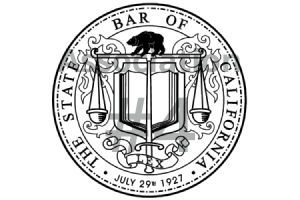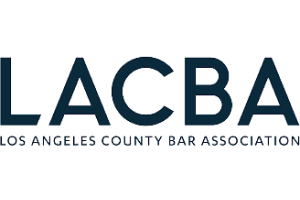California Appeals Court Finds for Defendants in Asbestos Case
May 25, 2017

Cases involving injuries due to asbestos inhalation have been in the news a lot lately, as individuals exposed to the material over a long period of time have begun to show symptoms. In one such case, the plaintiff alleged that his father was exposed to asbestos from the defendants’ products during the time when he repaired brakes and clutches for his employer. The plaintiff also alleged that he was secondarily exposed to asbestos when he visited the father at work, doing things such as sweeping piles of dust from the repairs, and also when the father would return home with dust on his clothing, which was washed with the family clothing.
The plaintiff was secondarily (para-occupationally) exposed to the same asbestos when he visited the father at work and when the father inadvertently carried asbestos to the family home or vehicle after work. As a result of this asbestos exposure, the plaintiff suffered from or had an increased risk of contracting serious injuries, including mesothelioma. He brought causes of action for negligence, breach of implied warranty, strict products liability based on design and manufacturing defects, fraud and failure to warn, and conspiracy to defraud and failure to warn. The defendants filed separate motions for summary judgment, each arguing that the plaintiff did not have and could not obtain evidence to prove his claims.
The father worked at the Bekins main warehouse in Stockton from June 1974 until May 1982. At Bekins, he repaired and replaced brakes, clutches, and engine gaskets on “unibody” or “bobtail” trucks and 18-wheel trucks. When removing brakes, the father used compressed air to blow brake dust out of brake drums and assemblies and clutch assemblies, which created visible dust in the air. When installing new brakes, he would sometimes sand or grind the replacement brake parts, which also generated dust. From 1972 to 1982, “once a week or so,” the plaintiff visited the father while he was working on trucks at Bekins. He sometimes helped his father with brake and clutch work, and he sometimes swept up dust that was generated by this work. The father also wore his dusty clothes home from work, where the work clothes were washed with the family laundry.
The summary judgment proceedings centered on whether the plaintiff had or could obtain sufficient evidence that the defendants’ asbestos-containing products were in these trucks when the father performed brake work on the trucks, either as original equipment when the trucks were first manufactured (OEM) or as after-market replacement parts during brake repair jobs.
The plaintiff had difficulty establishing an evidentiary record that the father had worked on any of the several trucks that had asbestos-containing brake systems, or that he had used any of the defendants’ products that contained asbestos in conducting repairs. While the plaintiff had an expert witness to attest to this evidence, the defendants asserted, and the trial court agreed, that the basis for the witness’ testimony was insufficient to infer that the father had conducted the repairs with the particular trucks or replacement parts.
The threshold for a cause of action in asbestos-related cases is proof of the exposure to asbestos from the defendant’s product and proof that the exposure was a substantial factor in bringing about the injury. Rutherford v. Owens-Illinois, Inc. (1997), 16 Cal.4th 953, 982-983.
The defendants claimed summary judgment was in order because the plaintiff had been unable to demonstrate that the father had been exposed to their individual products. The plaintiff argued that since the defendants were suppliers of the asbestos-containing brake components, it was likely that at some point, the father was exposed to at least one of their asbestos-containing parts. From this, the plaintiff argued that exposure may be established by a preponderance of the evidence simply by showing the defendant was a supplier of asbestos or asbestos-containing parts to a manufacturer during the period when the plaintiff was exposed to the manufacturer’s asbestos-containing product. The court clarified that the standard had to do with a situation in which it was already established that an individual was already exposed to asbestos, and the test had to do with whether exposure to more than one product containing asbestos was therefore a substantial factor in causing the injury.
In a similar case in which a construction worker was routinely exposed to dust on site, some of which contained asbestos, the court found that exposure could be inferred. The court held the evidence was sufficient only with respect to a manufacturer that exclusively used Union Carbide asbestos. Significantly, the plaintiff also testified that this manufacturer’s product was the second-most frequently used joint compound at the plaintiff’s worksites, and he specifically recalled inhaling dust from that product during the mid to late 1970s. The court further found that the evidence was insufficient with regard to minority suppliers or suppliers for which a percentage was not known. In this case, the suppliers listed as defendants were among many, and an exact percentage was not known. Thus, the court found the inference that any of their products may have been used by the plaintiff was insufficient. In another case, the court found that a mere possibility of exposure was not sufficient to establish liability.
While the plaintiff established that the defendants supplied replacement parts to the plaintiff’s workplace through another company, the plaintiff failed to establish that the replacement brake linings the father actually handled were probably supplied by one of the defendants. He produced no evidence that one of the defendants was the primary or majority supplier of linings for International brand replacement brake parts.
The plaintiff also attempted to argue strict liability on the basis of a design defect, asserting that the truck the plaintiff’s father repaired required the use of asbestos-containing products. However, the court found that since the plaintiff failed to establish that the defendants’ products were the exclusive or majority supplied for these repairs, the design defect claim couldn’t stand. The court found that there was no evidence that asbestos-containing parts were the only ones that could be used or that they were the only ones used.
Therefore, the judgment was affirmed.
The San Marcos product liability attorneys at the Rubinstein Law Group have been representing injured victims for over 20 years. We know how difficult it can be to cope with a serious injury, which is why we will not only provide expert representation but will also help you regain your dignity and sense of independence and self-worth. Our personal injury lawyers in Escondido only succeed if we are able to help our clients receive justice.










